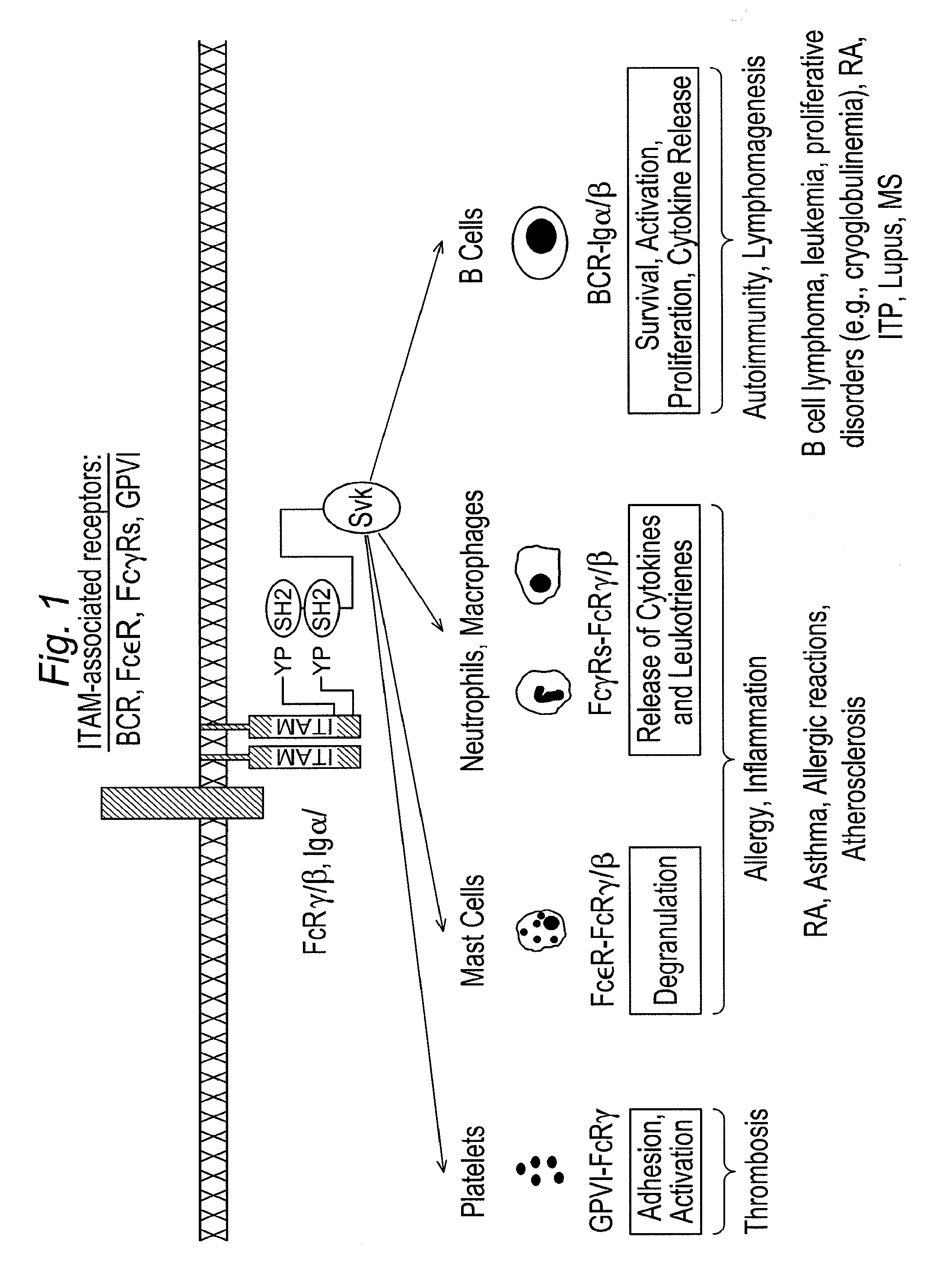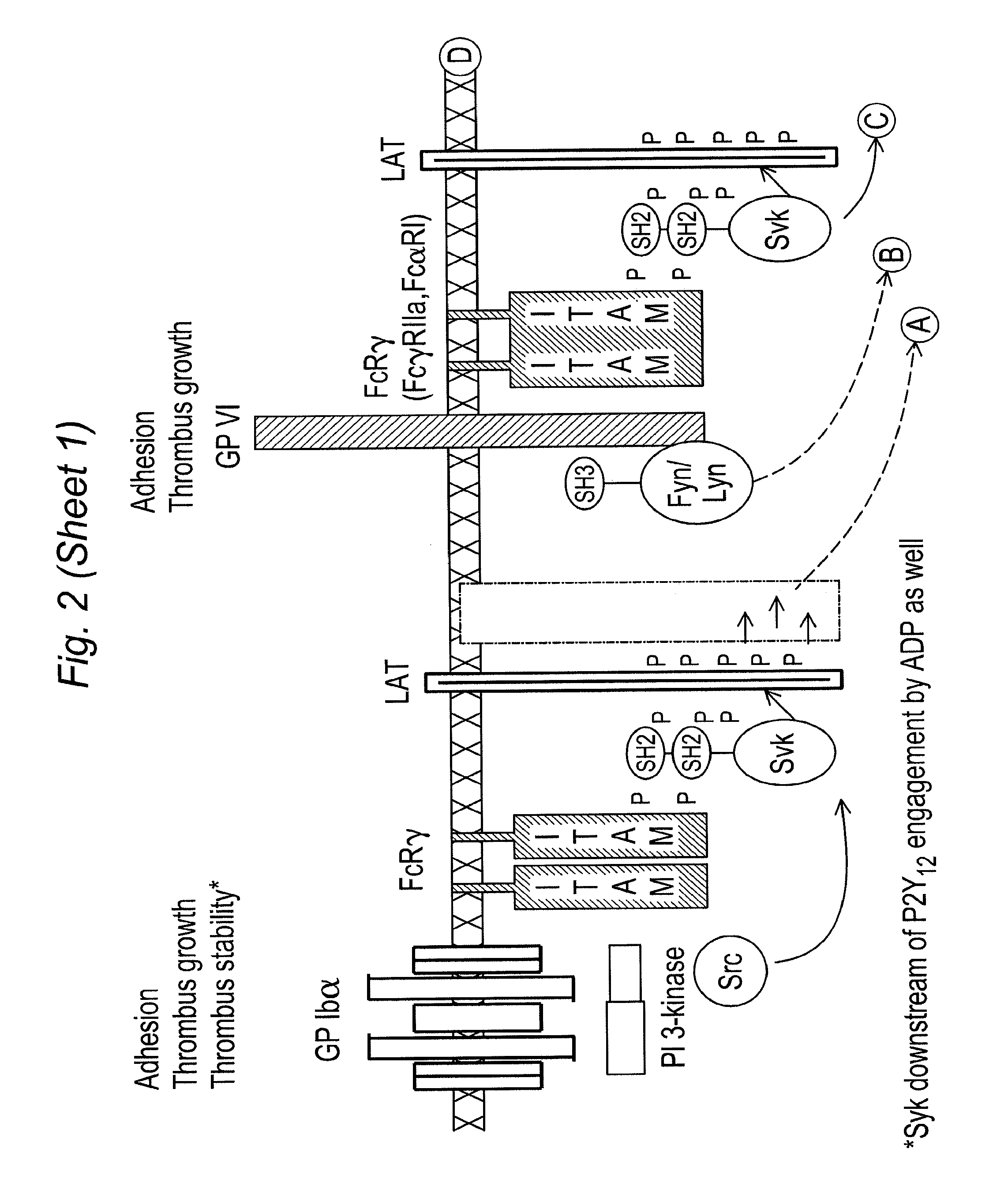Inhibitors of syk and JAK protein kinases
a syk and jak protein kinase technology, applied in the field of pyrimidine5carboxamide compounds, can solve the problems of obstructing blood flow, all of the treated vessels are restenose, and injuring resident coronary artery smooth muscle cells (smcs), etc., to achieve the effect of filling and narrowing the vascular space and significantly obstructing blood flow
- Summary
- Abstract
- Description
- Claims
- Application Information
AI Technical Summary
Benefits of technology
Problems solved by technology
Method used
Image
Examples
example 1
4-(4-(4-acetylpiperazin-1-yl)phenylamino)-2-((1R,2S)-2-aminocyclohexylamino)pyrimidine-5-carboxamide
[0518]
[0519]Step 1: To a stirring solution of carboxylic acid 72.1 (85 g, 540 mmol) in thionyl chloride (425 mL) was added pyridine (8.5 mL, 0.11 mmol), slowly. The reaction was stirred at 75° C. overnight at which time it was concentrated and dried under vacuum to a light yellow powder. This yellow solid was slowly diluted with 750 mL of ethanol and refluxed overnight. The next day the reaction was determined to be complete by HPLC and then cooled in an ice bath and the solid filtered and washed with diethyl ether affording ethyl ester 72.2 an off-white powder (91 g, 87% for two steps). MS found for C7H8N2O4 as (M+H)+185.0.
[0520]Step 2: Ester 72.2 (22 g, 120 mmol) was dissolved in phosphorous oxychloride (60 mL, 600 mmol) and the mixture treated with N,N-diethylaniline (27 mL, 167 mmol) and the mixture heated to 105° C. until the reaction was determined to be complete by HPLC. It was...
example 2
2-((1R,2S)-2-aminocyclohexylamino)-4-(4-(1,1-dioxo)thiomorpholinophenylamino)pyrimidine-5-carboxamide
[0525]
[0526]The above racemic compound was prepared using the same synthetic scheme demonstrated in Example 1 with 4-(1,1-dioxo)thiomorpholinoaniline to replace aniline 72.4. MS found for C21H29N7O3S as (M+H)+460.2. UV λ=236, 312 nm.
example 3
4-(4-(1H-pyrazol-1-yl)phenylamino)-2-((1R,2S)-2-aminocyclohexylamino)pyrimidine-5-carboxamide
[0527]
[0528]Step 1: Dichloropyrimidine 72.3 (1.12 g, 5.05 mmol) was dissolved in 60 mL DMF and stirred at RT. To it were added 4-(1H-pyrazol-1-yl)aniline 74.1 (0.96 g, 6.1 mmol) in one portion and ethyldiisopropylamine (DIEA, 1.58 mL, 9.1 mmol) dropwise using a syringe. The mixture was stirred for 1 hour at RT. To it was then added sodium thiomethxoide (885 mg, 12.6 mmol). The mixture was stirred at RT for overnight, diluted with ethyl acetate, washed with brine three times, dried over MgSO4, concentrated in vacuo and subjected to flash column to afford compound 50.2 was a white solid. MS found for C17H17N5O2S as (M+H)+356.1.
[0529]Step 2: Ethyl ester 74.2 from Step 1 was dissolved in 200 mL THF. To it were added lithium hydroxide hydrate (424 mg, 10.1 mmol) and 20 mL water. The mixture was stirred for 2 days at RT. It was concentrated in vacuo to remove THF and carefully treated with 1N HCl ...
PUM
 Login to View More
Login to View More Abstract
Description
Claims
Application Information
 Login to View More
Login to View More - R&D
- Intellectual Property
- Life Sciences
- Materials
- Tech Scout
- Unparalleled Data Quality
- Higher Quality Content
- 60% Fewer Hallucinations
Browse by: Latest US Patents, China's latest patents, Technical Efficacy Thesaurus, Application Domain, Technology Topic, Popular Technical Reports.
© 2025 PatSnap. All rights reserved.Legal|Privacy policy|Modern Slavery Act Transparency Statement|Sitemap|About US| Contact US: help@patsnap.com



